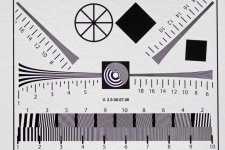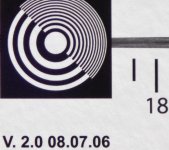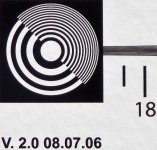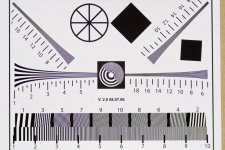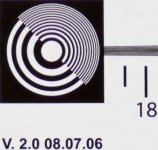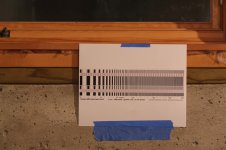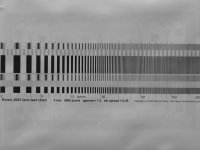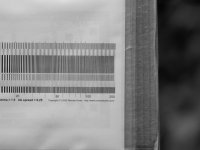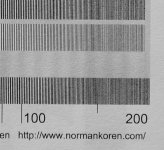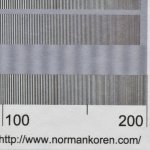Paul Corfield
Well-known member
2X Aico 7 element teleconverter performed very nicely for this one. Sharper than the 4 element 1.5X Vivitar I used on the last test.
edit - As a comparison to the unprocessed RAW file I also posted a full size crop showing the RAW file after processing in Adobe Lightroom. You can see how well the RAW file comes up after some very basic editing. The Unprocessed RAW files in the Canon 450D can look slightly soft I think but the detail is there to be brought out.
Make and model of DSLR: Canon 450D
Make and model of scope: Skywatcher Evostar Pro 80ED
Make and model of converter or barlow: 2X Aico 7 element Teleconverter
Type, make and model of camera adapter: T-Ring with 2" scope adapter, both unbranded
Length of spacer needed to reach focus: 60mm
Focal length of complete setup in mm: 1920mm after crop factor of 1.6
Measured distance between target and telescope in meters: 15m 13cm
Evaluated resolution number: 20
Speed setting of camera: 1/60sec
ISO: 400
Original picture format (RAW, JPG) and resolution (mpx) RAW 12.2 million pixels
Date and time: 8th july 10:08
Weather conditions (sun and wind): Sunny but target was in shade, breezy but garden is sheltered.
Other pertinent information:[/QUOTE]
edit - As a comparison to the unprocessed RAW file I also posted a full size crop showing the RAW file after processing in Adobe Lightroom. You can see how well the RAW file comes up after some very basic editing. The Unprocessed RAW files in the Canon 450D can look slightly soft I think but the detail is there to be brought out.
Make and model of DSLR: Canon 450D
Make and model of scope: Skywatcher Evostar Pro 80ED
Make and model of converter or barlow: 2X Aico 7 element Teleconverter
Type, make and model of camera adapter: T-Ring with 2" scope adapter, both unbranded
Length of spacer needed to reach focus: 60mm
Focal length of complete setup in mm: 1920mm after crop factor of 1.6
Measured distance between target and telescope in meters: 15m 13cm
Evaluated resolution number: 20
Speed setting of camera: 1/60sec
ISO: 400
Original picture format (RAW, JPG) and resolution (mpx) RAW 12.2 million pixels
Date and time: 8th july 10:08
Weather conditions (sun and wind): Sunny but target was in shade, breezy but garden is sheltered.
Other pertinent information:[/QUOTE]
Attachments
Last edited:




